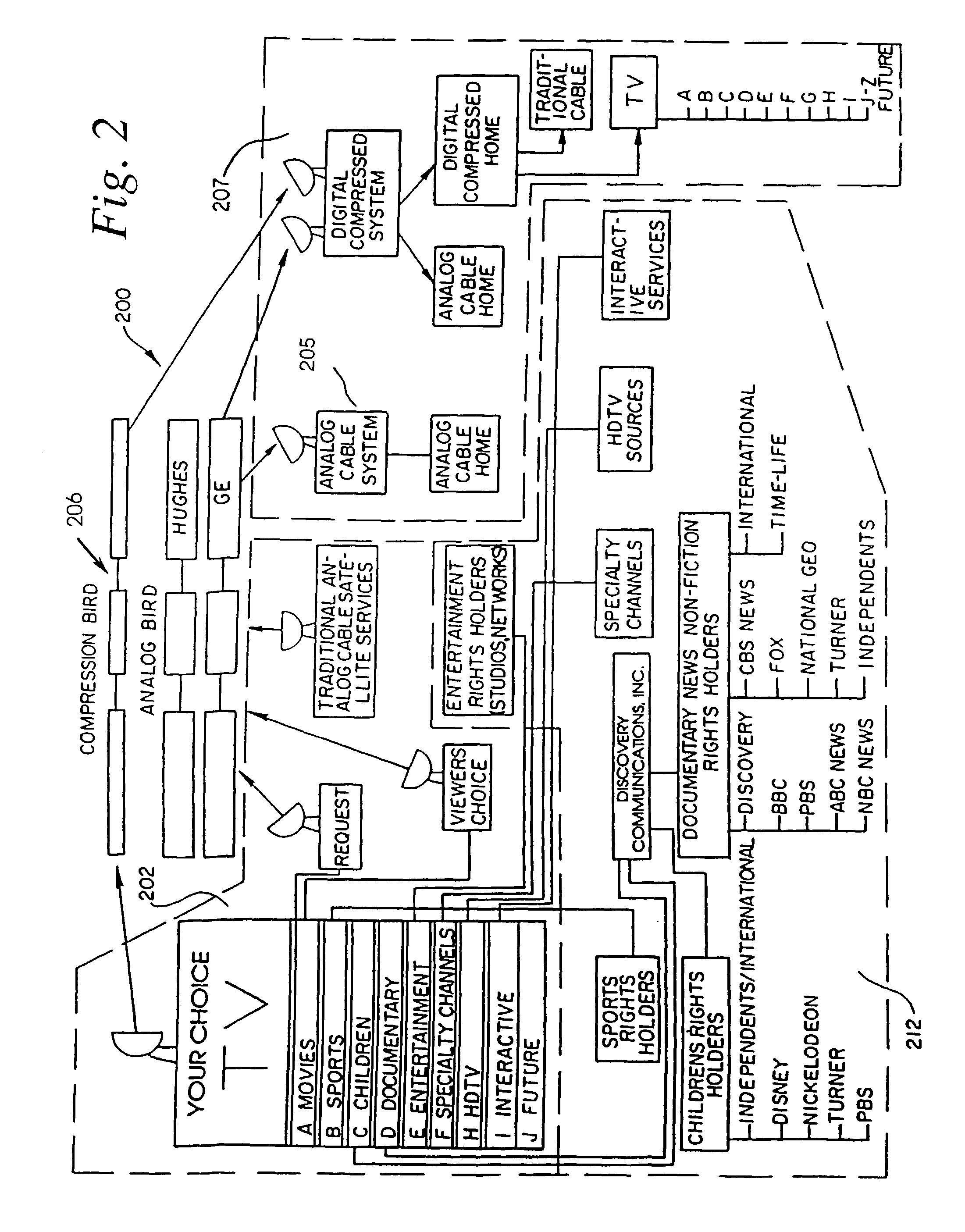Targeted advertisement using television viewer information
a technology for television viewers and advertisements, applied in television systems, television systems, two-way working systems, etc., can solve the problems of increasing program capacity that is beyond the ability of many consumers to effectively use, and no method of managing program choices is provided to consumers, so as to keep costs down and increase the selectiveness of viewing.
- Summary
- Abstract
- Description
- Claims
- Application Information
AI Technical Summary
Benefits of technology
Problems solved by technology
Method used
Image
Examples
Embodiment Construction
[0090]A. Television Program Delivery System Description
[0091]1. Introduction
[0092]FIG. 1 shows an expanded television program delivery system 200 that dramatically increases programming capacity using compressed transmission of television program and targeted advertisement signals. Developments in digital bandwidth compression technology now allow much greater throughput of television program signals over existing or slightly modified transmission media. The program delivery system 200 shown provides subscribers with a user friendly interface to operate and exploit a six-fold or more increase in current program delivery capability.
[0093]Subscribers are able to access an expanded television program package and view selected programs through a menu-driven access scheme that allows each subscriber to select individual programs by sequencing a series of menus. The menus are sequenced by the subscriber using simple alpha-numeric and iconic character access or moving a cursor or highlight...
PUM
 Login to View More
Login to View More Abstract
Description
Claims
Application Information
 Login to View More
Login to View More - R&D
- Intellectual Property
- Life Sciences
- Materials
- Tech Scout
- Unparalleled Data Quality
- Higher Quality Content
- 60% Fewer Hallucinations
Browse by: Latest US Patents, China's latest patents, Technical Efficacy Thesaurus, Application Domain, Technology Topic, Popular Technical Reports.
© 2025 PatSnap. All rights reserved.Legal|Privacy policy|Modern Slavery Act Transparency Statement|Sitemap|About US| Contact US: help@patsnap.com



